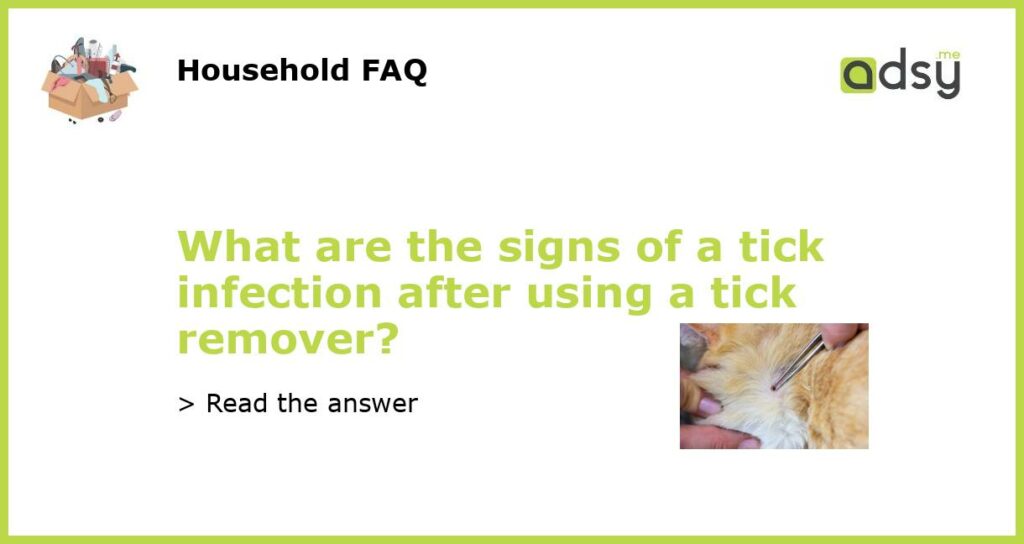Signs of a Tick Infection after Using a Tick Remover
Ticks can be a nuisance for both humans and pets, and it is essential to remove them as soon as possible to prevent potential infections. However, even after using a tick remover, there can still be a risk of infection. It is important to know the signs of a tick infection after using a tick remover, so you can seek medical attention if necessary.
Skin Irritation
One of the signs of a tick infection after using a tick remover is skin irritation around the bite area. This can manifest as redness, itching, or swelling. It is normal to experience some slight skin irritation after removing a tick, but if the irritation worsens or persists for more than a few days, it could indicate an infection. In some cases, the infection can lead to a bacterial skin infection called cellulitis, which would require medical treatment.
Fever and Fatigue
If you develop a fever and experience fatigue after removing a tick, it could be a sign of a tick infection. Tick-borne infections such as Lyme disease can cause flu-like symptoms, including fever and tiredness. These symptoms may not appear immediately after removing the tick but can develop within a few days or weeks. If you notice these symptoms, it is important to consult a healthcare professional to determine the cause and receive appropriate treatment.
Muscle and Joint Pain
Another sign of a tick infection after using a tick remover is muscle and joint pain. Tick-borne diseases such as Lyme disease and Rocky Mountain spotted fever can cause inflammation in the muscles and joints, leading to pain and stiffness. If you experience persistent or worsening muscle and joint pain after removing a tick, it is advisable to seek medical attention. Prompt treatment can help prevent further complications.
Headache and Dizziness
Tick-borne infections can also cause headaches and dizziness. These symptoms may be accompanied by nausea, vomiting, and sensitivity to light. If you develop these symptoms after removing a tick, it could be a sign of a tick-borne infection. It is important to consult a healthcare professional to determine the cause of these symptoms and receive appropriate treatment. Some tick-borne diseases, such as Lyme disease, can have serious neurological implications if left untreated.
Rash
A rash is a common sign of a tick-borne infection, especially in the case of Lyme disease. The characteristic Lyme disease rash, known as erythema migrans, often appears as a bull’s-eye pattern around the tick bite. However, not all tick-borne infections cause a rash, and the absence of a rash does not rule out an infection. If you notice any unusual rashes or skin changes after removing a tick, it is important to consult a healthcare professional for proper evaluation and diagnosis.






